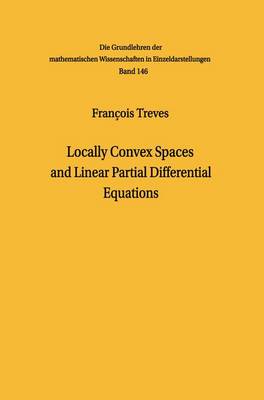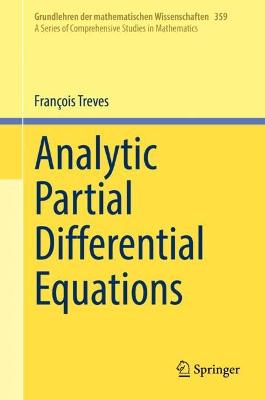Grundlehren der mathematischen Wissenschaften
2 primary works
Book 146
Locally Convex Spaces and Linear Partial Differential Equations
by Francois Treves
Book 359
The book begins by establishing the fundamental properties of analytic partial differential equations, starting with the Cauchy–Kovalevskaya theorem, before presenting an integrated overview of the approach to hyperfunctions via analytic functionals, first in Euclidean space and, once the geometric background has been laid out, on analytic manifolds. Further topics include the proof of the Lojaciewicz inequality and the division of distributions by analytic functions, a detailed description of the Frobenius and Nagano foliations, and the Hamilton–Jacobi solutions of involutive systems of eikonal equations. The reader then enters the realm of microlocal analysis, through pseudodifferential calculus, introduced at a basic level, followed by Fourier integral operators, including those with complex phase-functions (à la Sjöstrand). This culminates in an in-depth discussion of the existence and regularity of (distribution or hyperfunction) solutions of analytic differential (and later, pseudodifferential) equations of principal type, exemplifying the usefulness of all the concepts and tools previously introduced. The final three chapters touch on the possible extension of the results to systems of over- (or under-) determined systems of these equations—a cornucopia of open problems.
This book provides a unified presentation of a wealth of material that was previously restricted to research articles. In contrast to existing monographs, the approach of the book is analytic rather than algebraic, and tools such as sheaf cohomology, stratification theory of analytic varieties and symplectic geometry are used sparingly and introduced as required. The first half of the book is mainly pedagogical in intent, accessible to advanced graduate students and postdocs, while the second, more specialized part is intended as a reference for researchers.

